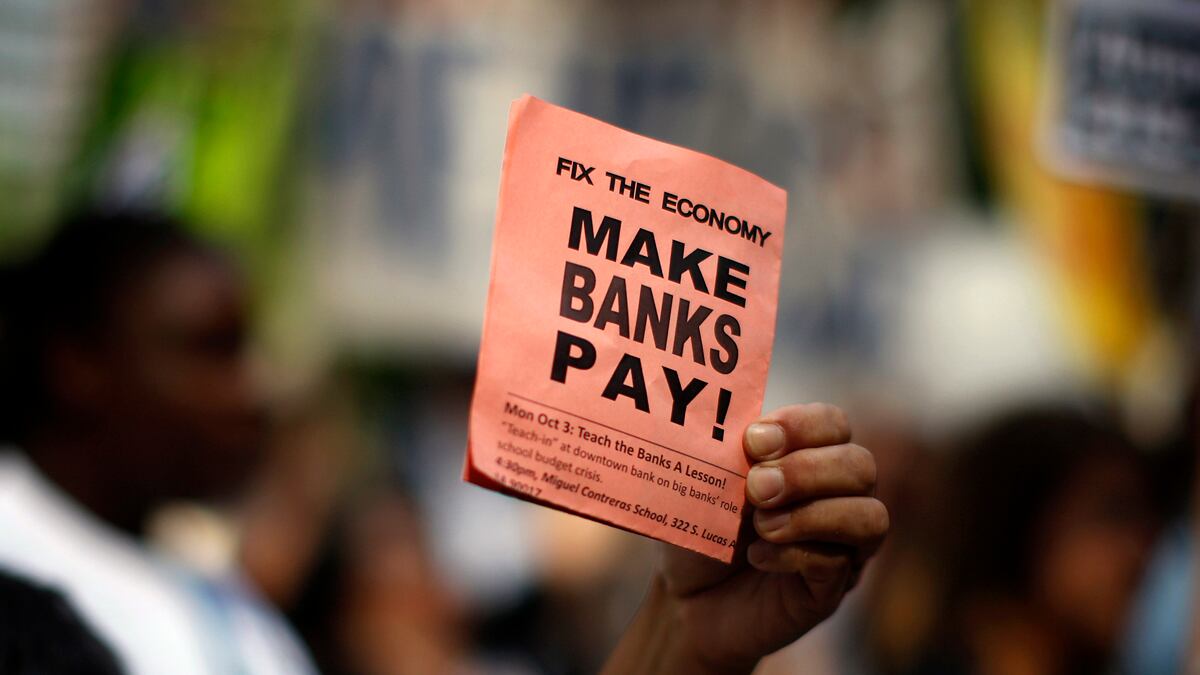The biggest banks that received billions from the government’s taxpayer-funded bailout of the financial system—J.P. Morgan Chase, Bank of America—have long since bought back the preferred shares they sold to the Treasury Department in late 2008 and early 2009. Add in dividend payments and the sale of warrants, and taxpayers have notched a profit on the Capital Purchase Program, the central component of TARP. The CPP disbursed just over $250 billion to financial institutions and has received $264 billion in return. (The latest TARP update can be seen here.)
But the TARP did not just feed the whales of the American banking system. It also dished out chum to the minnows, in disbursements of tens or hundreds of million dollars to smaller, regional banks. All told, 707 financial institutions participated in the program. Of those, 325 have either made only partial payments or haven’t made any payments at all. Together, they owe the government more than $11 billion.
As the four year anniversary of TARP approaches, the government is eager to close the books on the TARP programs. So instead of waiting around for the banks to purchase their stock back, Treasury has started to auction off stakes. In late June, Treasury auctioned off preferred shares of seven banks that participated in TARP, getting $204 million from investors. Last week, the government reaped nearly $245 million in a similar auction.
The government’s willingness to sell-off their remaining stakes—even at a loss—shows its eagerness to exit a massively unpopular program. At this point, even if the Treasury cannot recover its full investment in the auctions, every additional dollar brought in is more profit for the taxpayer and less direct government ownership of the banking system.

But while most of the remaining stakes are small, several large banks—the types of institutions that should have been able to earn their way out of the bailouts—have yet to return the capital. In fact, the five largest banks owe a combined $3.3 billion to the government.
Who are these large stragglers?
The two biggest remaining government ownership shares are in Popular Inc, a Puerto Rican bank based in San Juan, Synovus Financial Corp, the second largest bank holding company in Georgia. According to the latest data on TARP repayments from the Treasury Department, taxpayers invested $967.9 million and $935 million in Popular and Synovus respectively, for a total of almost $2 billion. Zions Bancorporation, a Utah-based bank that initially took $1.4 billion in TARP funds, has repaid half the total, but still owes $700 million. First Bancorp, a Puerto Rican bank which the government has a $424 million stake in; and Sterling Financial Corporation, which received a government infusion of $303 billion.
It looks taxpayers will have to wait a while longer for these large banks to return capital. As a group, they’re struggling to generate income sufficient to repay the TARP funds. Synovus, which has $27 billion in assets, actually reported a net income last week of $24.8 million; in the second quarter of last year, on the other hand, Synovus reported a $53.5 million loss. When announcing earnings, Synovus’s CEO said that TARP repayment would be a “likely a 2013 event.” Popular, the Puerto Rican bank, has also returned to profitability, reporting a net income of $65 million for the second quarter of this fiscal year. Last year, a Popular spokesperson told Bloomberg that “Popular has no specific date at this moment to repay TARP, but it is committed to exiting the TARP program as soon as possible and has made significant strides toward that end.”






